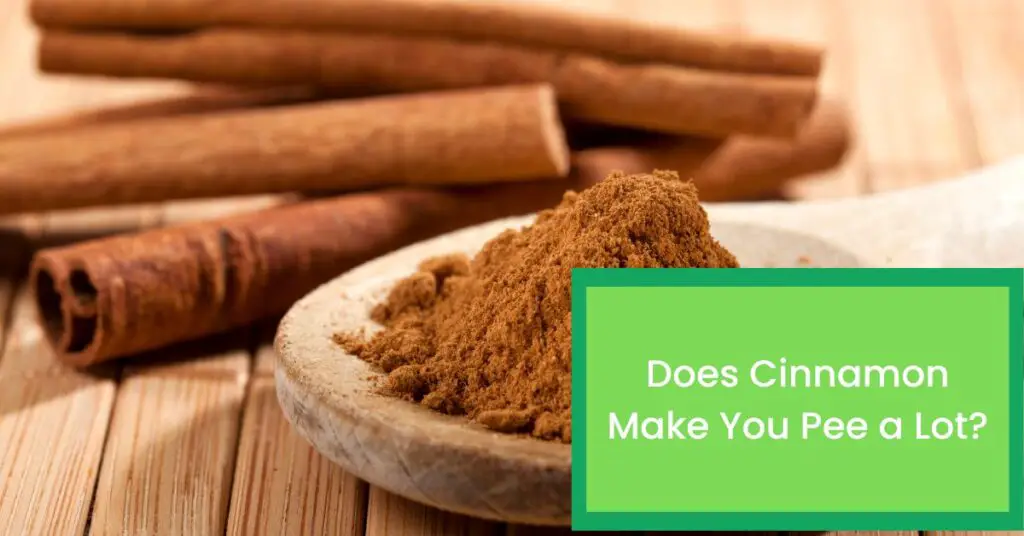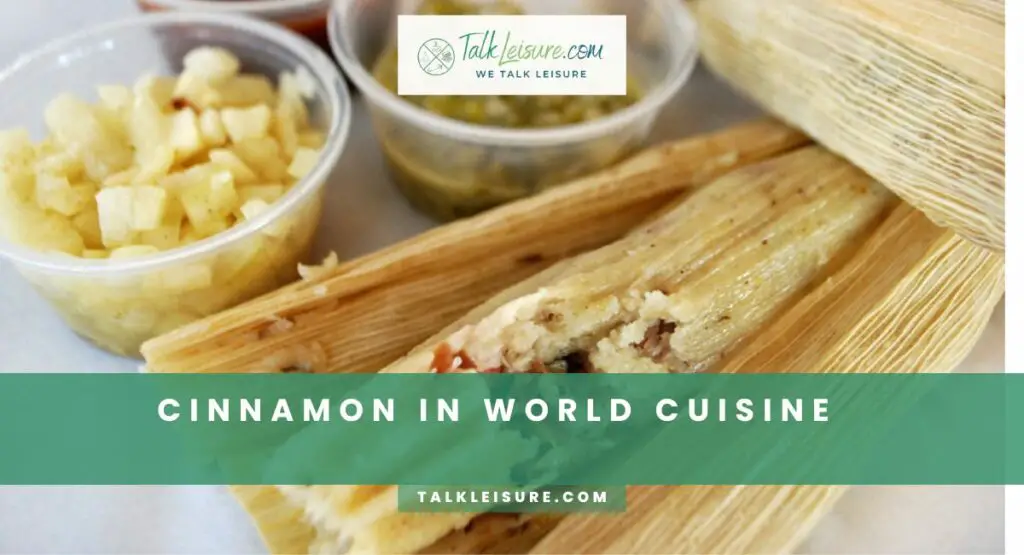Cinnamon has become a beloved spice in the culinary world thanks to its unique flavor and versatility.
Its warming, sweet taste adds depth and richness to both sweet and savory dishes, making it a favorite among chefs and home cooks alike.
In this blog post, we will explore the reasons behind cinnamon’s popularity and 9 Cinnamon related words that every cinnamon enthusiast must know.
Explanation of the Popularity of Cinnamon in the Culinary World
Cinnamon is highly sought after in the culinary world for several reasons:
Flavor: Cinnamon has a distinct, warm, and slightly sweet flavor that adds depth and complexity to dishes. It enhances the taste of both sweet and savory recipes, making it a versatile ingredient.
Aromatics: The aroma of cinnamon is irresistible, invoking feelings of comfort and warmth. Its enticing scent can elevate the dining experience, making dishes even more appealing.
Health benefits: Cinnamon has long been praised for its potential health benefits. It is believed to have anti-inflammatory and antioxidant properties, as well as the ability to regulate blood sugar levels.
Ceylon Cinnamon
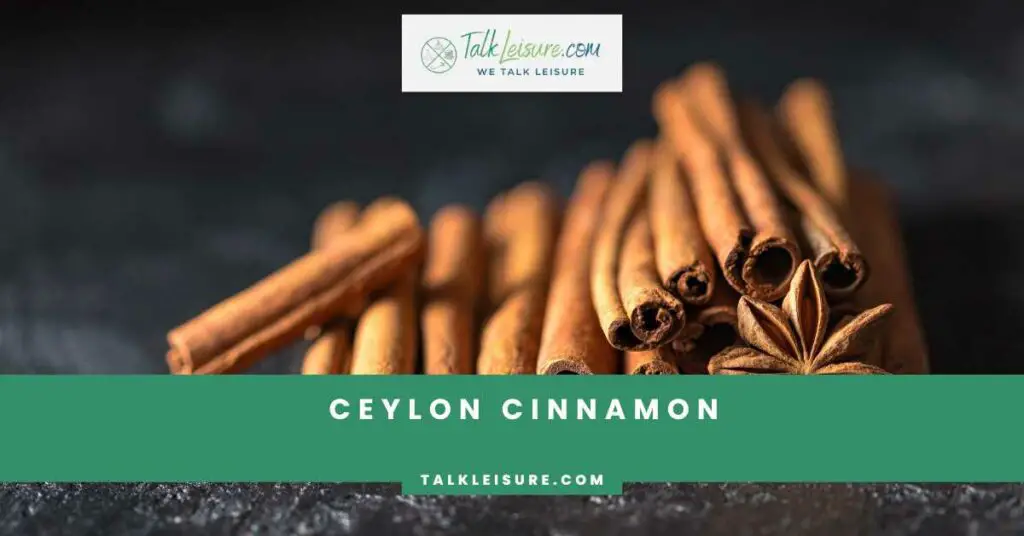
Ceylon cinnamon is a type of cinnamon that is known for its delicate and aromatic flavor. It is derived from the bark of trees belonging to the Cinnamomum family. Here are some distinctive characteristics of Ceylon cinnamon:
Flavor: Ceylon cinnamon has a more subtle and nuanced flavor compared to other varieties of cinnamon. It has a slightly sweet and citrusy taste, which adds a unique depth to dishes.
Aroma: The aroma of Ceylon cinnamon is enchanting, with hints of citrus and floral notes. It can instantly uplift your senses and make your dishes more inviting.
Texture: Ceylon cinnamon has a thin, delicate bark that can be easily crumbled or ground into a fine powder. It blends effortlessly into recipes, enhancing the overall taste and texture.
Health benefits: Like other types of cinnamon, Ceylon cinnamon is believed to have potential health benefits, including anti-inflammatory and antioxidant properties.
So, whether you’re sprinkling it on top of your morning oatmeal or using it to infuse flavor into your favorite curry, Ceylon cinnamon is a wonderful addition to any culinary creation. Its unique characteristics make it a cherished spice among chefs and food enthusiasts alike.
Cassia Cinnamon
Cassia cinnamon is another popular type of cinnamon that is widely used in cooking and baking. It is derived from the bark of trees belonging to the Cinnamomum cassia family. Here are some facts about cassia cinnamon and its culinary uses:
Flavor: Cassia cinnamon has a stronger and more robust flavor compared to Ceylon cinnamon. It has a warm, spicy, and slightly sweet taste, which adds a bold and intense flavor to dishes.
Aroma: The aroma of cassia cinnamon is rich and earthy, with heavy notes of spice. It can fill your kitchen with an inviting scent and enhance the overall experience of your meals.
Texture: Cassia cinnamon has a thicker and rougher bark compared to Ceylon cinnamon. It is best used in recipes where it can be easily ground or added as a whole stick to infuse flavor.
Culinary uses: Cassia cinnamon is commonly used in baking, particularly for pastries, cinnamon rolls, and pies. It is also utilized in savory dishes like curries and stews to add warmth and depth of flavor.
Whether you’re a seasoned chef or a home cook, cassia cinnamon is a versatile spice that can elevate the taste of your dishes. Experiment with its bold flavor and discover new culinary delights.
Cinnamon Stick
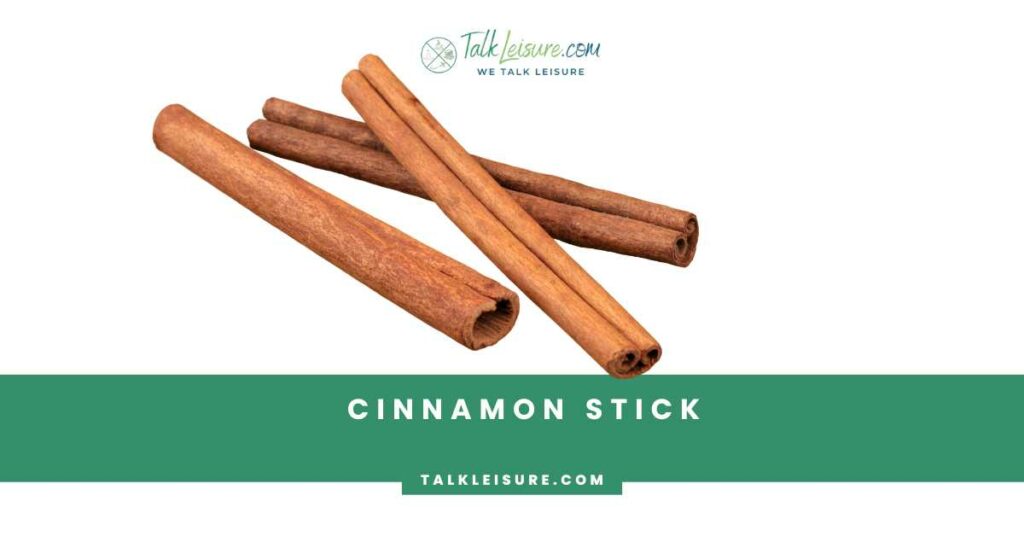
Cinnamon sticks are an essential spice commonly used in cooking and baking. They are made from the bark of trees belonging to the Cinnamomum family. Here’s what you should know about cinnamon sticks:
Flavor: Cinnamon sticks offer a warm and sweet flavor, with hints of spice and undertones of citrus. They provide a more subtle and complex taste compared to ground cinnamon.
Aroma: The aroma of cinnamon sticks is fragrant and inviting, releasing a heavenly scent when used in cooking. It can instantly fill your kitchen with a cozy and comforting smell.
Texture: Cinnamon sticks have a firm and woody texture, making them ideal for infusing flavors in liquids and slow-cooked dishes. They can be easily added to recipes and removed when the desired flavor is achieved.
Culinary uses: Cinnamon sticks are commonly used in hot beverages like tea, mulled wine, and hot chocolate. They are also added to rice dishes, stews, and curries to enhance the overall flavor profile.
With their versatile and aromatic nature, cinnamon sticks are a must-have in any kitchen. Experiment with them in your favorite recipes and unlock a world of delicious flavors.
Cinnamon Powder
Cinnamon powder is a delightful spice that is commonly used in cooking and baking. It is made from grinding cinnamon sticks, which are the inner bark of trees belonging to the Cinnamomum family. Here’s how cinnamon sticks are transformed into powder:
Grinding process: To make cinnamon powder, cinnamon sticks are first dried and then ground into a fine powder. This can be done using a mortar and pestle, a spice grinder, or a coffee grinder. The result is a fragrant and flavorful powder that can be easily incorporated into recipes.
Flavor and aroma: Cinnamon powder offers a rich and intense flavor, similar to cinnamon sticks. It has a warm and sweet taste with notes of spice and hints of citrus. The aroma is captivating and can instantly elevate the aroma of your dishes.
Culinary uses: Cinnamon powder is a versatile spice that can be used in a wide range of dishes. It is commonly added to baked goods like cookies, cakes, and pastries to infuse them with its delightful flavor. It is also a great addition to beverages like coffee, hot chocolate, and smoothies.
By grinding cinnamon sticks into powder form, you can easily incorporate this delicious spice into your favorite recipes. Its versatility and aromatic qualities make it a staple in any kitchen.
Cinnamon Bark
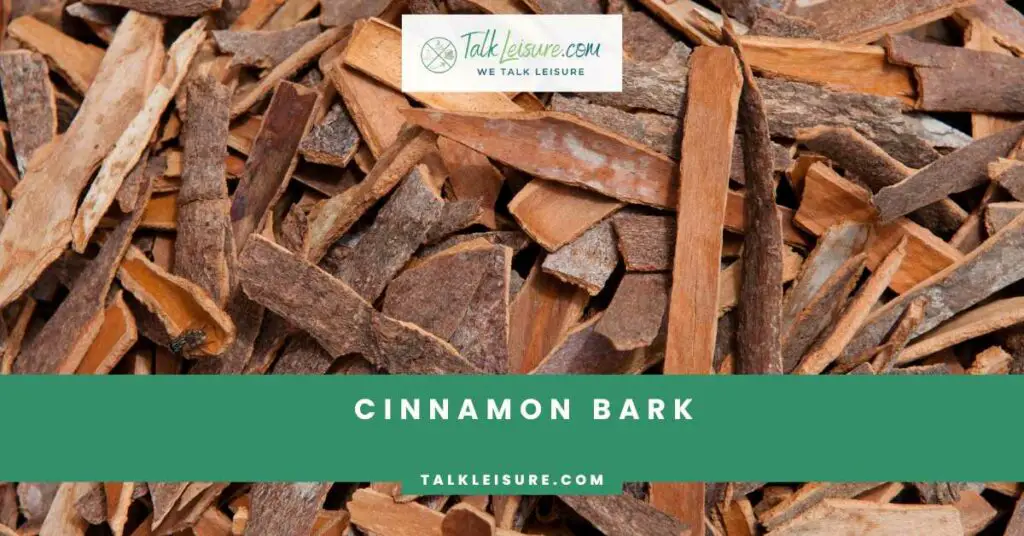
Cinnamon bark is the inner bark of trees belonging to the Cinnamomum family. It is commonly used in the form of powder, which is made by grinding cinnamon sticks. Here’s what you need to know:
About the grinding process: The process of transforming cinnamon sticks into powder involves first drying the sticks and then grinding them into a fine powder. This can be done using a mortar and pestle, spice grinder, or coffee grinder. The result is a fragrant and flavorful powder that adds a delightful touch to any dish.
Flavor and aroma: Cinnamon powder offers a rich and intense flavor, similar to cinnamon sticks. It has a warm and sweet taste with notes of spice and hints of citrus. The aroma is simply captivating and can instantly elevate the fragrance of your dishes.
Culinary uses: Cinnamon powder is incredibly versatile and can be used in a wide range of dishes. It is a popular addition to baked goods like cookies, cakes, and pastries, as it infuses them with its delightful flavor. You can also add it to beverages like coffee, hot chocolate, and smoothies for a flavorful twist.
By grinding cinnamon sticks into powder, you can easily incorporate this delicious spice into your favorite recipes. Its versatility and aromatic qualities make it a staple in any kitchen. So, go ahead and spice up your dishes with the enchanting flavor of cinnamon bark!
Cinnamon Essential Oil
Essential oils are concentrated liquids extracted from various plants, and cinnamon essential oil is derived from the bark of cinnamon trees. Here’s what you need to know:
Extraction process: To obtain cinnamon essential oil, the bark of the cinnamon trees is first harvested and then subjected to a steam distillation process. This process involves heating the bark with steam, causing the essential oil to evaporate. The vapor is then collected and condensed, resulting in the liquid form of the essential oil.
Aroma and properties: Cinnamon essential oil has a warm and spicy aroma, reminiscent of freshly ground cinnamon powder. It is known for its antibacterial and antifungal properties, making it a popular choice for natural remedies and cleaning products.
Uses: Cinnamon essential oil can be used in a variety of ways. It can be diffused to create a cozy and inviting atmosphere in your home. You can also add a few drops to your skincare products or DIY homemade cleaners for an extra boost of antimicrobial power.
With its unique extraction process and versatile uses, cinnamon essential oil is a valuable addition to any essential oil collection. Give it a try and experience its wonderful aroma and potential benefits!
Cinnamon Sugar

Cinnamon sugar is a delightful mixture of ground cinnamon and granulated sugar. It adds a touch of sweetness and warm spice to any dish. Here’s how you can make it:
Ingredients: All you need is ground cinnamon and granulated sugar. The ratio is typically 1 tablespoon of cinnamon to 1/4 cup of sugar, but you can adjust according to your taste preference.
Instructions: Simply mix the cinnamon and sugar together in a bowl until well combined. You can use a whisk or a fork to ensure even distribution.
Uses: Cinnamon sugar is incredibly versatile. Sprinkle it on top of toast, oatmeal, or pancakes for a delicious breakfast treat. You can also use it to coat baked goods like cookies or donuts, adding a delightful cinnamon flavor.
Give homemade cinnamon sugar a try and elevate your dishes with its irresistible sweetness and warmth. Enjoy!
Cinnamon Roll
When it comes to indulgent treats, one word that instantly comes to mind is “cinnamon roll.” This delectable pastry is made with a sweet dough filled with a mixture of cinnamon, sugar, and butter, then rolled into a spiral shape. It is typically topped with a generous drizzle of creamy icing, adding the perfect finishing touch.
The aroma of freshly baked cinnamon rolls wafting through the air is enough to make anyone’s mouth water. The warm, gooey center combined with the slightly crispy edges creates a delightful contrast in texture. Each bite is a heavenly combination of sweetness and warmth, thanks to the aromatic spice of cinnamon.
Cinnamon rolls are often enjoyed for breakfast or as a dessert. They pair perfectly with a cup of hot coffee or a glass of cold milk. Whether you prefer them plain or loaded with extras like nuts or raisins, one thing is for sure – cinnamon rolls are a beloved treat that brings comfort and joy to every bite.
Saigon Cinnamon
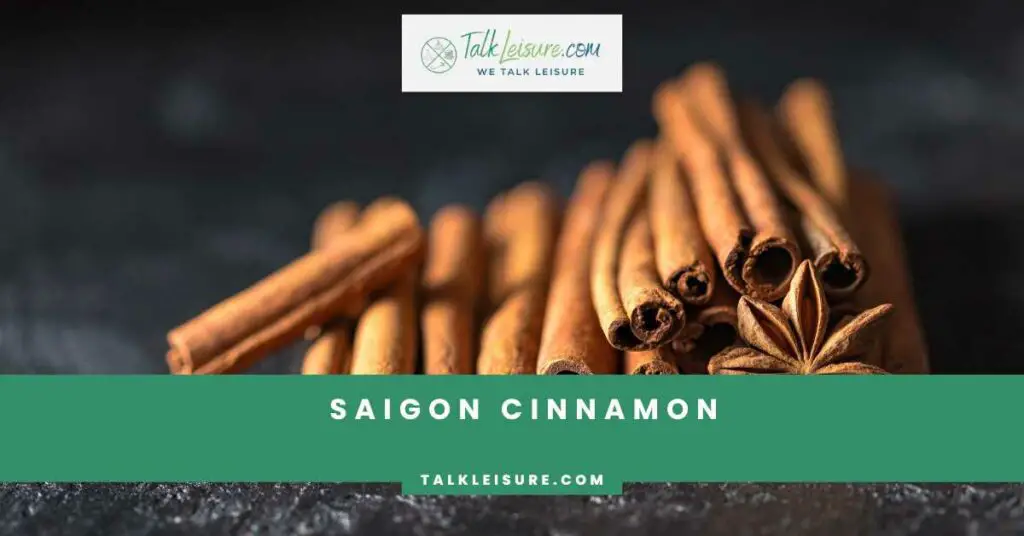
One word that often comes to mind when thinking about cinnamon is “Saigon.” Saigon cinnamon, also known as Vietnamese cinnamon, is a type of cinnamon that is highly prized for its sweet and spicy flavor profile. It is considered to be one of the highest quality cinnamon varieties available.
What sets Saigon cinnamon apart from other types is its vibrant flavor. It has a strong, intense taste with a higher concentration of essential oils, giving it a rich and robust aroma. The flavor of Saigon cinnamon is often described as warm, sweet, and slightly peppery.
In addition to its exceptional flavor, Saigon cinnamon is also known for its distinctive reddish-brown color and its thin, delicate bark. The bark curls and flakes easily, making it perfect for grinding into a fine powder or for use in baking and cooking.
Saigon cinnamon is commonly used in a variety of dishes, including desserts, beverages, and savory dishes. Its bold flavor and aroma can elevate and enhance the taste of any recipe, making it a favorite among foodies and chefs alike.
If you’re a foodie looking to explore the world of cinnamon, Saigon cinnamon is definitely a must-try. Its distinct flavor and unique qualities make it a standout choice that will elevate your culinary creations to a whole new level of deliciousness. So, go ahead and give Saigon cinnamon a try and prepare to be delighted by its unforgettable taste.
Conclusion
Cinnamon has a rich history dating back thousands of years. It was highly prized in ancient Egypt and was used for embalming, as well as in cooking and religious ceremonies. The spice was also valued in ancient China and India, where it was used for both culinary and medicinal purposes.
Cinnamon comes from the bark of trees belonging to the Cinnamomum family. The most commonly used cinnamon varieties are Ceylon cinnamon, known for its delicate and aromatic flavor, and Cassia cinnamon, which has a more robust taste.
The popularity of cinnamon in the culinary world can be attributed to its unique flavor, enticing aroma, and potential health benefits. Its rich history and origins add to its allure, making it a beloved spice worldwide. Whether sprinkled on top of a latte or used in a savory stew, cinnamon adds a special touch to any dish.
Best Wishes!



